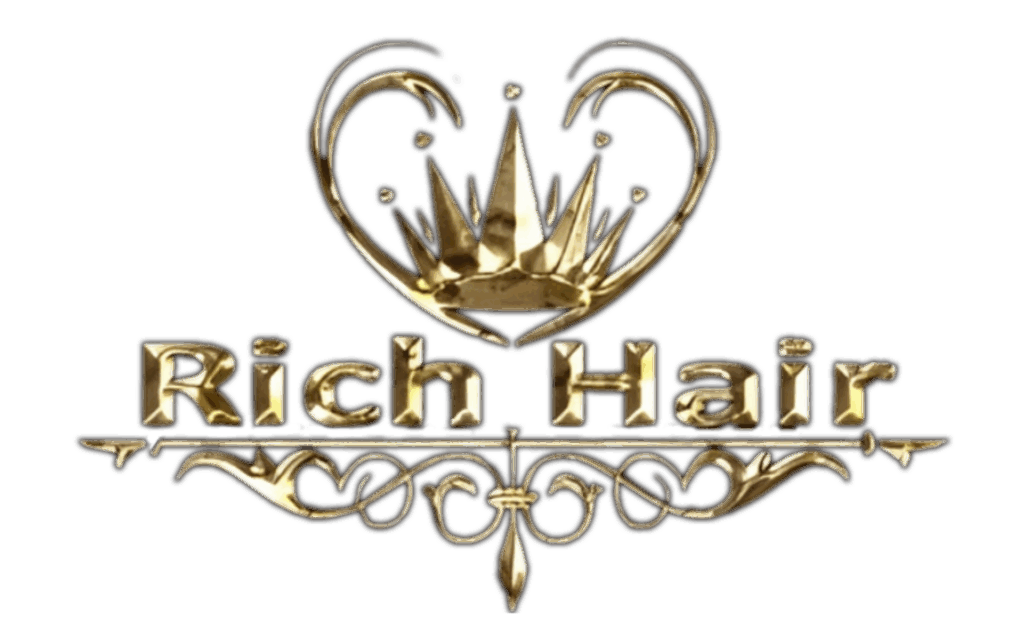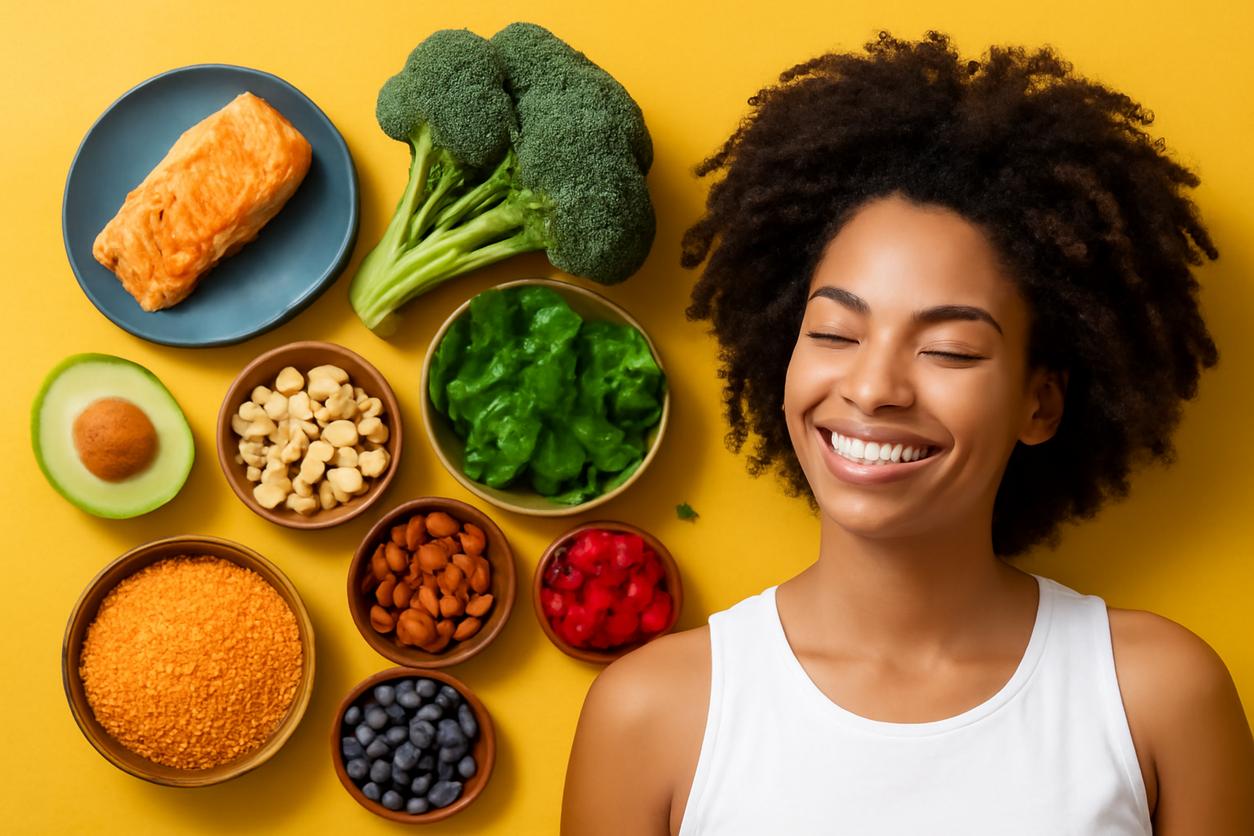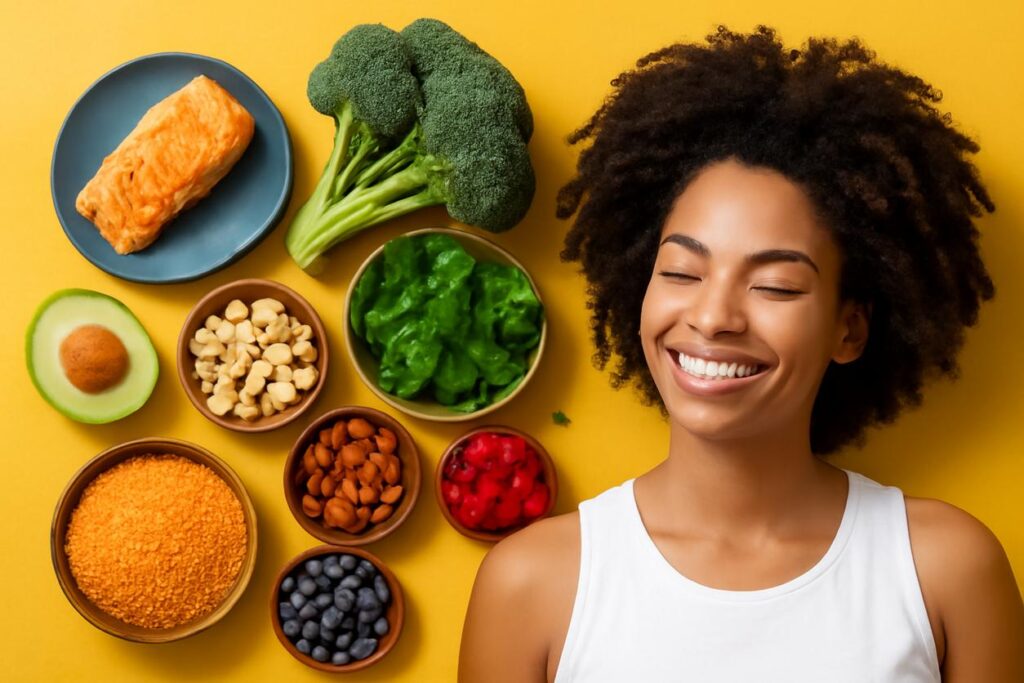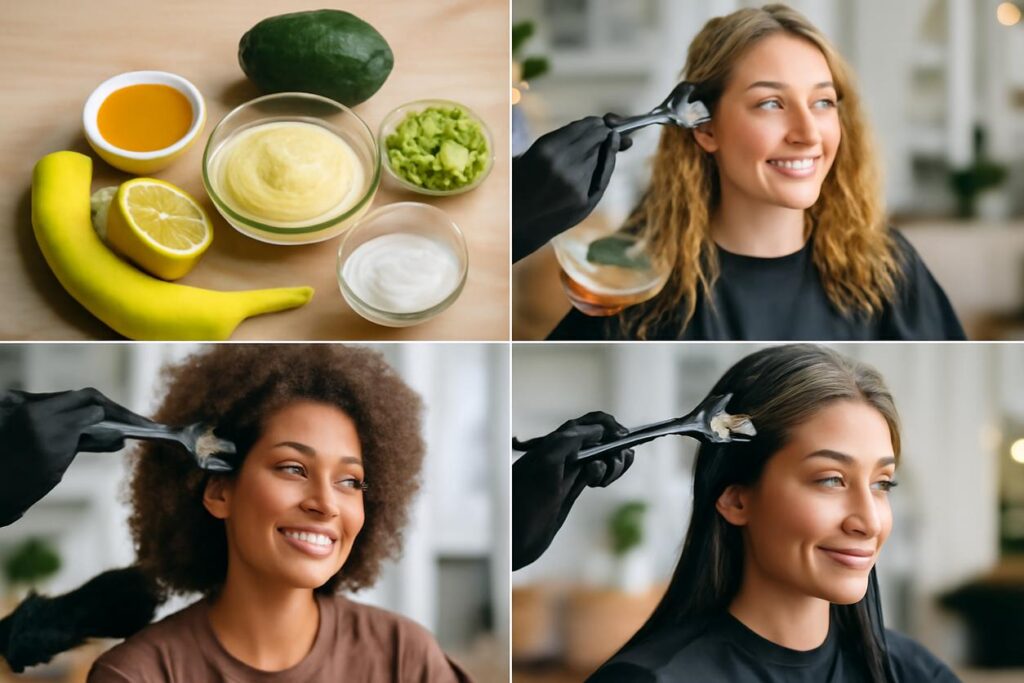Table of Contents
- Introduction — How nutrition shapes curl health
- How curl structure influences nutritional needs
- Core nutrients for resilient curls
- Top whole foods to include daily
- Sample 7-day curl-support meal plan with swaps
- Timing, hydration and meal habits that help curls
- When to consider targeted supplementation
- Lifestyle habits that amplify nutrition benefits
- Common myths about diet and curly hair
- Practical checklist and grocery guide
- Frequently asked questions
- References and further reading
Introduction — How nutrition shapes curl health
Welcome to the ultimate guide on curly hair nutrition. If you have waves, curls, or coils, you know that your hair has a unique personality. Some days it’s defined and bouncy; other days, it’s a frizzy, unpredictable mystery. While topical products play a role, the true foundation of healthy, vibrant curls is built from within. What you eat directly impacts the strength, elasticity, and shine of every strand emerging from your scalp.
Think of your hair follicles as tiny factories. To produce high-quality hair, these factories need a steady supply of specific raw materials: proteins, vitamins, minerals, and healthy fats. A deficiency in any of these core building blocks can lead to weak, brittle hair that is prone to breakage and struggles to hold its beautiful curl pattern. This guide will provide a comprehensive, food-first approach to optimizing your diet, transforming your hair health from the inside out and giving you the luscious curls you’ve always wanted.
How curl structure influences nutritional needs
Understanding your hair’s structure, particularly its porosity, is key to tailoring your curly hair nutrition strategy. Porosity refers to your hair’s ability to absorb and retain moisture. The shape of a curly hair strand, with its twists and turns, naturally makes the cuticle layer more raised than on straight hair, which can lead to higher porosity and moisture loss.
- Low Porosity Curls: These strands have a tightly bound cuticle layer, making it difficult for moisture to get in. Hair can be prone to product build-up. Nutritionally, focus on hydration and easily absorbed nutrients. Lighter oils like grapeseed and jojoba (found in foods like sunflower seeds) are beneficial, and ensuring adequate water intake is crucial.
- Medium (Normal) Porosity Curls: The cuticle layer is looser, allowing for a balanced absorption and retention of moisture. This hair type benefits from a well-rounded diet that maintains this healthy state. A consistent intake of all core nutrients is the goal.
- High Porosity Curls: These strands have gaps and holes in the cuticle, causing them to absorb moisture quickly but lose it just as fast. This often results in frizz and dryness. A diet rich in proteins and healthy fats is essential to help fill these gaps and seal in moisture. Think avocados, nuts, seeds, and lean proteins to provide the necessary building blocks for repair.
By eating for your porosity type, you provide your body with the specific tools it needs to build stronger, more resilient hair strands that can better withstand environmental stressors and styling.
Core nutrients for resilient curls
A balanced diet is non-negotiable for healthy hair. However, certain nutrients are superstars when it comes to supporting the unique structure of curls. Integrating these into your diet is the cornerstone of effective curly hair nutrition.
Protein and amino acids
Your hair is made of about 95% keratin, a fibrous structural protein. To produce keratin, your body needs amino acids, which you get from eating protein. A lack of dietary protein can lead to hair that is weak, brittle, and grows slowly. Focus on high-quality protein sources to give your curls the foundational strength they need.
- Sources: Lean meats (chicken, turkey), fish, eggs, dairy products (Greek yogurt, cottage cheese), legumes (lentils, chickpeas), tofu, and quinoa.
Essential fatty acids and hydration
Healthy fats, particularly omega-3 fatty acids, are vital for scalp health. They nourish the hair follicles, lubricate the scalp, and add shine and elasticity to your hair. Dehydration, both internal and external, is the enemy of a defined curl. Proper water intake is just as important as the fats you consume.
- Sources: Fatty fish (salmon, mackerel, sardines), flaxseeds, chia seeds, walnuts, and avocados.
Vitamins important for curl strength (A, C, D, E)
Vitamins act as powerful antioxidants and support various cellular functions crucial for hair growth.
- Vitamin A: Helps glands in the scalp produce sebum, the natural oil that moisturizes your scalp and hair. Find it in sweet potatoes, carrots, spinach, and kale.
- Vitamin C: A potent antioxidant that protects against free radical damage. It’s also essential for creating collagen, a protein that strengthens hair. Excellent sources are citrus fruits, bell peppers, strawberries, and broccoli.
- Vitamin D: Low levels of Vitamin D have been linked to hair loss. It helps create new follicles. Get it from sunlight exposure, fatty fish, and fortified foods.
- Vitamin E: Another powerful antioxidant that can help prevent oxidative stress on the scalp. Find it in sunflower seeds, almonds, spinach, and avocados.
Minerals to watch (iron, zinc, selenium)
Minerals play a critical role in the hair growth cycle. Deficiencies are a common cause of hair thinning and loss.
- Iron: Essential for producing hemoglobin, which carries oxygen to your cells for growth and repair, including the cells that stimulate hair growth. Iron deficiency (anemia) is a major cause of hair loss. Find it in red meat, spinach, lentils, and fortified cereals.
- Zinc: Plays a vital role in hair tissue growth and repair. It also helps keep the oil glands around the follicles working properly. Good sources include oysters, beef, pumpkin seeds, and lentils.
- Selenium: This trace mineral helps your body utilize proteins and hormones for producing new hair, and it acts as an antioxidant. Brazil nuts are an incredibly rich source, along with fish and eggs.
Biotin and B-complex overview
Biotin (Vitamin B7) is famous for its role in hair health, as it’s involved in keratin production. However, it’s just one piece of the puzzle. The entire B-complex of vitamins (including B6, B12, and folate) helps create red blood cells, which carry oxygen and nutrients to the scalp and hair follicles. Deficiencies in these can hinder hair growth.
- Sources: Whole grains, almonds, meat, fish, seafood, and dark, leafy greens.
Top whole foods to include daily
For a simplified approach to curly hair nutrition, focus on incorporating these powerhouse foods into your daily routine:
- Eggs: A fantastic source of protein and biotin.
- Berries: Loaded with Vitamin C and antioxidants.
- Spinach: Packed with folate, iron, and vitamins A and C.
- Fatty Fish (like Salmon): An excellent source of protein, Vitamin D, and omega-3s.
- Avocados: A delicious source of Vitamin E and healthy fats.
- Nuts and Seeds: Deliver a variety of nutrients like zinc, selenium, and Vitamin E. A handful of walnuts or a tablespoon of flaxseeds is an easy addition.
- Sweet Potatoes: A great source of beta-carotene, which the body converts to Vitamin A.
- Legumes (like Lentils): A plant-based powerhouse of protein, iron, zinc, and biotin.
Sample 7-day curl-support meal plan with swaps
This plan is a template to guide your curly hair nutrition journey. Adjust portions based on your needs and feel free to swap proteins or vegetables.
| Day | Breakfast | Lunch | Dinner | Snack |
|---|---|---|---|---|
| Monday | Greek yogurt with berries and a sprinkle of chia seeds. | Large spinach salad with grilled chicken, bell peppers, and an olive oil vinaigrette. | Baked salmon with roasted sweet potatoes and broccoli. | Handful of almonds. |
| Tuesday | Scrambled eggs with spinach and whole-wheat toast. | Lentil soup with a side of whole-grain crackers. | Turkey meatballs with zucchini noodles and tomato sauce. | An apple with peanut butter. |
| Wednesday | Oatmeal made with milk, topped with walnuts and sliced banana. | Leftover turkey meatballs and zucchini noodles. | Chicken and vegetable stir-fry with brown rice. | Cottage cheese with peaches. |
| Thursday | Smoothie with spinach, pineapple, protein powder, and flaxseed. | Quinoa bowl with black beans, corn, avocado, and lime dressing. | Grilled steak with asparagus and a side salad. | A hard-boiled egg. |
| Friday | Whole-grain toast with avocado and a sprinkle of red pepper flakes. | Leftover steak salad. | Homemade black bean burgers on whole-wheat buns with a side of sweet potato fries. | Orange or other citrus fruit. |
| Saturday | Whole-grain pancakes topped with fresh berries and a drizzle of maple syrup. | Tuna salad (made with Greek yogurt) in lettuce wraps. | Shrimp scampi with whole-wheat pasta and a green salad. | Handful of pumpkin seeds. |
| Sunday | Omelette with cheese, mushrooms, and bell peppers. | Leftover shrimp scampi. | Roast chicken with carrots, onions, and quinoa. | A few squares of dark chocolate. |
Dietary Swaps: For a vegetarian or vegan plan, swap animal proteins for tofu, tempeh, edamame, lentils, or chickpeas. Use plant-based yogurt and milk. A vegan protein powder can be used in smoothies.
Timing, hydration and meal habits that help curls
How and when you eat matters. For optimal curly hair nutrition in 2025 and beyond, adopt these habits:
- Stay Hydrated: Aim for 8-10 glasses of water per day. Hydration starts from within and is essential for supple hair and a healthy scalp.
- Eat Consistently: Don’t skip meals. Your hair follicles need a constant supply of energy and nutrients. Crash dieting can shock your system and may lead to temporary hair shedding (telogen effluvium).
- Balance Your Macronutrients: Ensure each meal contains a source of protein, healthy fat, and complex carbohydrates. This combination helps stabilize blood sugar and provides sustained energy for all your body’s processes, including hair growth.
When to consider targeted supplementation
A food-first approach is always best. Your body absorbs nutrients more effectively from whole foods than from pills. However, supplementation might be necessary if you have a diagnosed deficiency (like iron or Vitamin D), follow a restrictive diet, or have a medical condition that affects nutrient absorption. Always consult with a healthcare professional or registered dietitian before starting any new supplements. They can run blood tests to identify specific deficiencies and recommend the correct dosage.
Lifestyle habits that amplify nutrition benefits
Your diet is powerful, but its benefits are amplified when combined with a healthy lifestyle.
- Manage Stress: High stress levels can push hair follicles into a resting phase, leading to increased shedding. Practice stress-reduction techniques like meditation, yoga, or regular exercise.
- Prioritize Sleep: Your body repairs itself during sleep. Aim for 7-9 hours of quality sleep per night to allow for optimal cell regeneration, which supports healthy hair growth.
- Gentle Hair Handling: Your nutritional efforts can be undone by physical damage. Use a silk or satin pillowcase, avoid tight hairstyles that pull on the roots, and be gentle when detangling.
Common myths about diet and curly hair
Let’s debunk some common misconceptions about curly hair nutrition:
- Myth: Taking a high-dose biotin supplement is all you need for amazing curls.Fact: Biotin is important, but it’s only one of many nutrients required. Biotin deficiencies are rare, and excess biotin won’t supercharge hair growth without a solid foundation of protein, iron, and other vitamins.
- Myth: You must eat a specific “superfood” every day to see results.Fact: There is no single magic food. Consistency and variety are far more important. A balanced diet rich in a wide range of whole foods will always be superior to relying on one or two items.
- Myth: Cutting all fats from your diet will improve your hair.Fact: Healthy fats are absolutely essential for hair health. They are critical for hormone production, scalp health, and adding natural shine to your curls.
Practical checklist and grocery guide
Use this simple guide on your next trip to the grocery store to stay on track with your curly hair nutrition goals.
- Proteins:
- Eggs
- Chicken or Turkey Breast
- Salmon or Mackerel
- Greek Yogurt (plain)
- Lentils and Chickpeas (canned or dry)
- Tofu or Tempeh
- Healthy Fats:
- Avocados
- Walnuts and Almonds
- Flaxseeds and Chia Seeds
- Olive Oil
- Fruits and Vegetables:
- Spinach and Kale
- Berries (fresh or frozen)
- Sweet Potatoes
- Bell Peppers (all colors)
- Broccoli
- Citrus Fruits
- Complex Carbs:
- Oats (rolled or steel-cut)
- Quinoa
- Brown Rice
- Whole-Wheat Bread or Pasta
Frequently asked questions
How long does it take for changes in my diet to affect my curly hair?
Patience is key. Hair grows about half an inch per month, so it will take at least 2-3 months to start seeing noticeable improvements in the new growth coming from your scalp. Consistency is more important than perfection.
Can my diet change my curl pattern?
While nutrition can’t fundamentally change your genetic curl pattern (e.g., from 2C waves to 4A coils), it can dramatically improve its health. A proper diet can make your existing pattern more defined, less frizzy, and bouncier by strengthening the hair strand and improving its elasticity.
Is a gluten-free or dairy-free diet better for curly hair?
Not necessarily. Unless you have a diagnosed intolerance, allergy, or celiac disease, there is no scientific evidence to suggest that eliminating gluten or dairy will inherently improve your hair. Both whole-grain wheat and dairy can be excellent sources of B vitamins, protein, and calcium, which support hair health.
References and further reading
For more in-depth, evidence-based information on nutrition and general health, we recommend these reputable sources:
- World Health Organization Nutrition
- PubMed Central general search for studies on diet and hair health.
- British Nutrition Foundation
- Rich Hair UK for hair science and trichology information.





